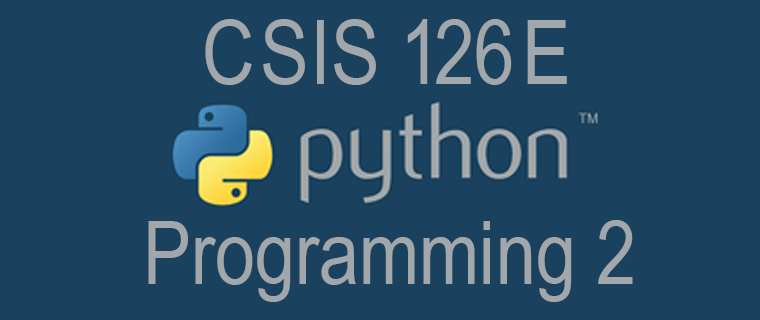Courses
Select a Course:

Course Description
This course continues the investigation of the Python programming language. Python features that will be covered include object-oriented design, advanced data collections, modules and packages, file handling, and features and services available in the Python standard library.
By successfully completing this course you will earn 3 units of college credit.
⇑ Table of Contents
Course Objectives
-
Analyze the basic structure of a Python application and be able to document, debug, compile, and run a simple application.
-
Create, name, and assign values to variables.
-
Use common control statements to implement flow control, looping, and exception handling.
-
Create methods (functions and subroutines) that can return values and take parameters.
-
Create, initialize, and use arrays to solve data storage and retrieval problems.
-
Explain the basic concepts and terminology of object-oriented programming.
-
Use common objects and references types.
-
Create common GUI components and modify their properties at both run time and design time.
-
Differentiate between object-oriented, structured, and functional programming methodologies.
-
Analyze and trace the execution of Python computer programs.
⇑ Table of Contents
Course Learning Outcomes
-
The student will create programs that read and write information from data files.
-
The student will create a Python class that demonstrates the proper use of data abstraction and encapsulation.
-
The student will use inheritance to produce a class that has an "isa" relationship.
-
The student will create Objects that have public interfaces to private data.
-
The student will create a Python application that uses the common GUI interface component.
⇑ Table of Contents